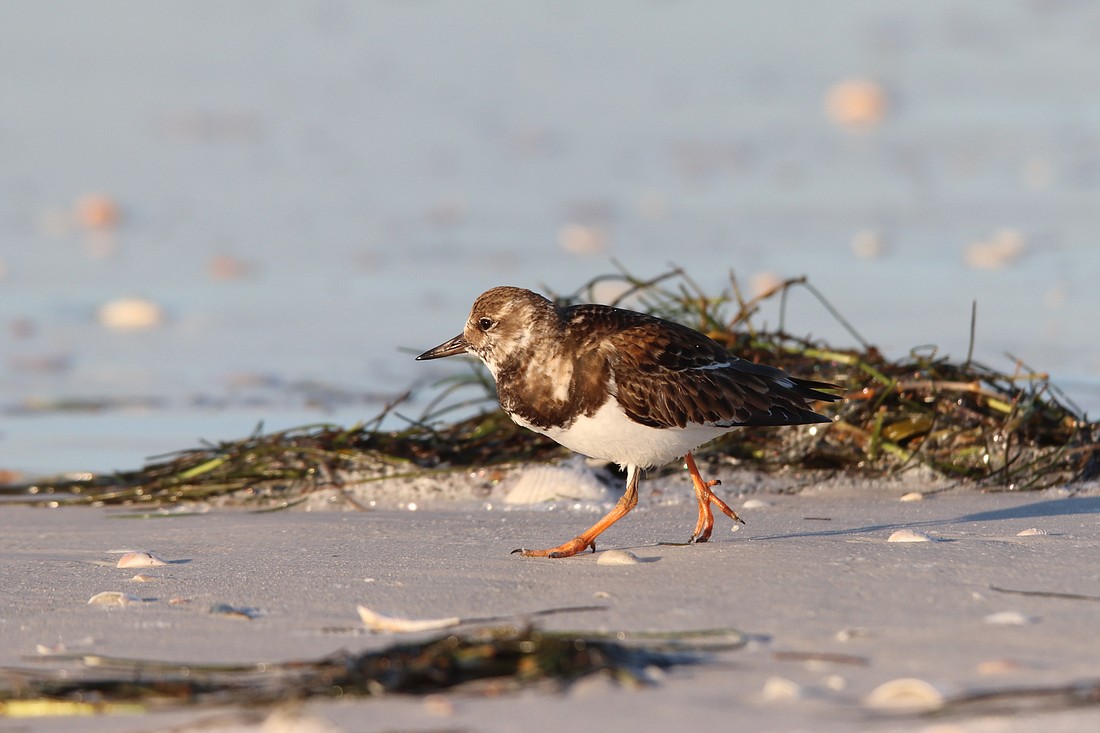- May 3, 2025
-
-
Loading

Loading

That line of seaweed on the beach might smell sometimes, but its importance to the beach environment is something most people overlook.
It’s called the wrack line.
High tide leaves its mark on beaches by depositing the wrack line, a noticeable line of seaweed, shells and other marine life.
Some beaches, especially those in front of resorts, are mechanically raked to remove the sometimes-smelly seaweed line.
Kylie Wilson is the seasonal shorebird coordinator in Sarasota for Audubon Florida. After six years in her position, she’s heard the arguments on both sides: rake the wrack or let it be.
She said the most commonly heard complaints are that the wrack line is visually unappealing and has a bad smell.
But for shorebirds, the wrack provides a crucial food source. A lot of shorebird species use the Gulf Coast as a stopping site during migration.
“They really rely on the wrack line, and living shorelines essentially, as food sources as they make their migration to their wintering grounds,” Wilson said.
Federally protected species like the red knot and piping plover are especially important in the region. The red knot is particularly known for long-distance migration, flying from the Arctic tundra to the southern tip of Argentina.
Other common species in the area include the sanderling and ruddy turnstone.
In the wrack line, these migratory birds find food critical to fueling them up. Small invertebrates like crabs and bugs are some of the most desirable food options in the wrack line.
“It’s just kind of like a microhabitat that is a really important baseline food source for a lot of coastal wildlife, shorebirds in particular,” Wilson said.
Not only is wrack a food source, but it’s also a natural beach builder.
As the seaweed is deposited on the high tide line, more sand is deposited atop the wrack line over time.
Some of the seeds — if not picked up by the shorebirds — also have a chance to grow after sand is deposited onto the wrack line. More vegetation helps to fortify beaches by locking in sediment.
And healthier, stronger beaches can help sea turtles too, said Longboat Key Turtle Watch Vice President Cyndi Seamon.
“It’s kind of like Mother Nature’s way of renourishing the beach,” Seamon said. “So there’s just more beach for the turtles to nest in.”
Over time, better beaches create better dune systems that help block out artificial light on the beach — another problem encountered by sea turtle hatchlings.
That being said, the wrack line also attracts a lot of plastics that get caught in the seaweed. But Seamon said LBKTW does cleanups as a part of each of their walks, and cleaning up the plastic on the beach can be something for everyone to do.

A key factor is raising awareness about the interesting parts of the wrack line, Seamon said.
The Florida Fish and Wildlife Conservation Commission has a Beach Wrack ID Guide, that can take people on a scavenger hunt through the wrack line.
Seamon said she tries to pass out these ID guides at LBKTW events and to anyone interested in an effort to grow interest and educate people about the wrack.
Smell and occasional plastics aside, Wilson and Seamon agree that the wrack line is more important to keep around.
“All of the natural benefits of the wrack line naturally accruing sand can really be more valuable than taking it away simply because it might not be visually appealing,” Wilson said.